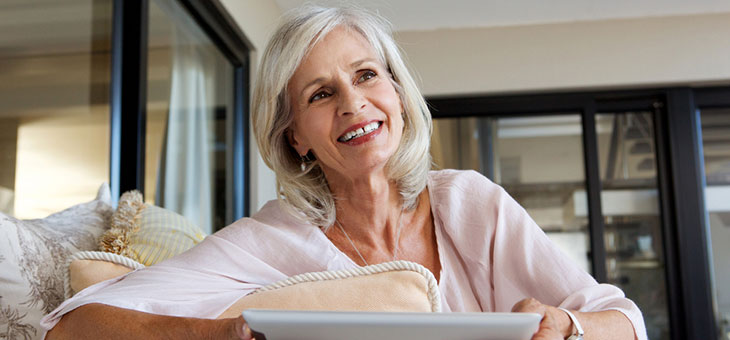Increasingly, surveys are confirming that mature Australians want to remain in their own homes. While living alone can be considered dangerous for older residents, smart home technology, new gadgets and even the NBN can all help to create a safer environment for those still at home. So what’s available to make it easier for older Australians to age in place?
Personal Gadgets
Alarms
Alarms allow those alone at home to send an automatic call for help if they fall or feel as thought they require medical attention. The personal alarm, usually worn around the neck or clipped to a belt, is a button to be carried all day, everyday. When pressed it will notify an emergency response centre to send help. Similarly, the alarm button can be mounted near a toilet or in the shower in case of slips or falls in the bathroom.
Medication reminder
A reminder to let the resident know that it’s time to take their medication, this device can activate up to six reminders per day. A family member or friend can also record reminders so the resident hears a familiar voice.
NBN-enabled technology
For the past year Feros Care’s LifeLink Telehealthcare service has been trialling My Health Clinic At Home (MYCAH). Encouraging mature Australians to take their health into their own hands, when using the service the participant is required to take their daily vital signs such as temperature or blood sugar levels, and to answer a few wellness questions.
These digital devices automatically send results to a central device (usually computer or iPad) in your home and then the device will send all the results via the NBN to a registered Telehealth nurse for monitoring. If something is astray with the results, the nurse can video call the participant to discuss with them why this may be.
Just like having a virtual doctor’s appointment, this NBN-enabled technology can also be applied to help the resident remain social with video catch-ups.
Smart Home Technology
Passive Infra-Red (PIR) Sensor
Also known as a ‘no movement detector’, the sensor will send an alert when there’s no movement in the house. When the resident is walking around at home the sensor is ‘happy’, however, it will send an alert when there is no movement as this may indicate the resident has fallen or not gotten out of bed.
Automatic night lighting with bed sensor
The Automatic Night Lighting controller is connected to a bed sensor, enabling lights to come on when the resident rises out of bed. Designed to decrease the likelihood of falls due to darkness, the lights also dim back off when the resident returns to bed.
These smart home technologies are just the tip of the iceberg when it comes to turning ordinary homes into life extending smart homes. Why not read the following articles for a more comprehensive list of technology which will give you safety and independence at home.
Related articles:
How the NBN helps your health at home
How smart home technology helps
What’s in a smart home

